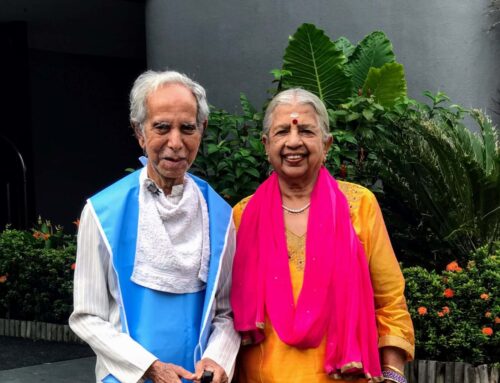London’s soaring Orbit is impressive – but is it really art?
Depending on who you ask, the ArcelorMittal Orbit, the 115-metre-tall public art project standing in the middle of London’s Olympic Village, is either a vertical icon or a massive eyesore. Since it was unveiled in May, the combined sculpture and observation tower has been received with a number of mixed, but mostly negative, reviews.
Bloomberg columnist James Russell called it a “£22.7 million image of industrial apocalypse” with “menacing tentacles … It will wow you even as you wonder how they got away with it.”
The Guardian’s Jonathan Jones described it as “colossal and imperfect … a generous drunken party animal” of a building.
Commissioned by London Mayor Boris Johnson, who got steel baron Lakshmi Mittal to bear the majority of the cost, the Orbit went from idea to inception rather quickly.
Some critics say that the design has a back-of-the-napkin feel to it, almost as if doodled during a plane flight.
Its inception was fortuitous. Boris Johnson bumped into Mr Mittal in Davos during the 2009 World Economic Forum, reportedly in the washroom. The mayor outlined his grand vision for a large structure to give the London Olympics something extra, as he put it.
Mr Mittal immediately promised to donate the steel for the sculpture. He ended up bearing most of the cost of, and giving his name to, what would eventually become the Orbit. The fire-engine red public sculpture and its observation tower can accommodate up to 5,000 paying visitors a day.
While no one doubts the grand ambition of the Orbit, the piece raises, once again, familiar questions about what the role of public art should be.
Its creator, artist Anish Kapoor, is no stranger to this genre. His Cloud Gate in Chicago uses stainless steel to create a stunning public sculpture that marries the wobbly playfulness of the liquid mercury that is said to have been its inspiration with the encompassing warmth of a womb.
Like Alexander Calder’s massive but playful sculptures, Mr Kapoor’s Cloud Gate engages, involves and elevates the mood of viewers.
The Orbit is something else altogether. It seems to reflect the grandiose ambitions of four men: Mr Kapoor, co-creator Cecil Balmond, Mr Johnson and Mr Mittal. By rising so far and so resolutely above the community that it inhabits, the Orbit seeks to awe rather than engage.
A more intimate project is underway at the Cultural Olympiad, where the Frieze Foundation is curating four new public art projects, including one by Sarnath Banerjee, who is producing a series of graphic art narratives about the history of competitive sport.
Public art projects can be intimate, entrenched in and deeply engaged with the community that they are part of: the soft, kinetic, colourful magic of many of Christo’s pieces spring to mind as examples.
Or they can reflect the soaring, quixotic aspirations of men. As one London gallerist said dryly after viewing the Orbit, most women artists are not interested in creating vertical structures. Rather, they prefer to create smaller intimate works with deeply personal narratives.
The fact that the Orbit was created for the Olympics explains its ambition. As China demonstrated in 2008, Olympic architecture and art have got to be different in scale and grandeur. The installations have to serve a functional purpose and host various competitions, but they also are supposed to awe and inspire, providing talking points and firing the public imagination.
China achieved these objectives with the Bird’s Nest and Water Cube, which are underutilised today but were endlessly discussed when they were unveiled.
In that sense, the Orbit is more akin to the Eiffel Tower than to the grand stadiums of Beijing. In terms of functionality, its future use is questionable. Whether it can become an emblem, like the Tour Eiffel, remains to be seen.
Indians have a phrase: paisa vasool, which means, “getting your money’s worth”. In terms of stirring conversation and debate, not to mention providing free publicity for Mr Mittal’s steel empire, the Orbit has already served its purpose for the men who spearheaded its creation.
Shoba Narayan is the author of Return to India, to be published this month on the Indian subcontinen




Leave A Comment